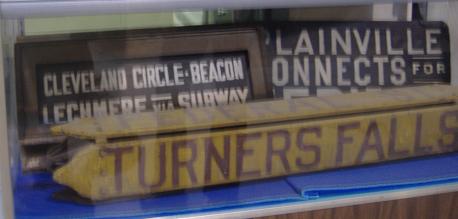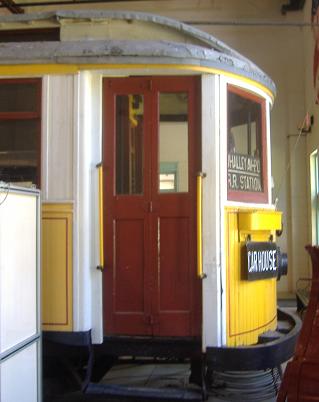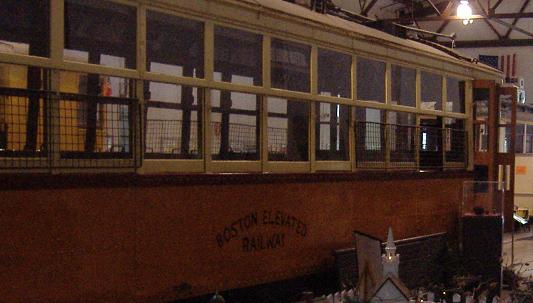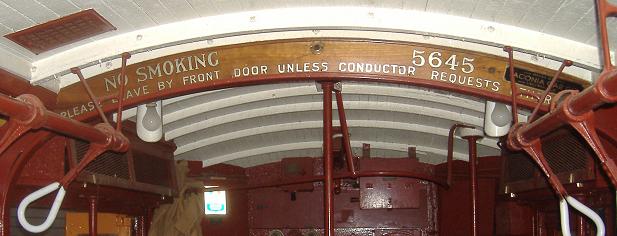CT Trolley Museum - Main Building
Inside the CT Trolley Museum
I start by walking in, looking left, then turning right and walking counterclockwise around the room. That way, when you're done with the page, you pass the beginning of the page again before walking out, and you get sucked into reading the whole thing another time.



The reason I looked left first: signs! The first sign hung at a station, while the second set hung in the trolley windows (I forget, but I think the TURNERS FALLS/FEDERAL ST. sign rotated to show destination of the trolley). The third sign was trackside, dozens of years ago. I believe the circuitry relates to early railroad crossings or else to early electrical switches, but I can be corrected on this point.



A CT Transit bus outfitted for a brief period to run on rails (for a greater bus range/operating effiency). The experiment with the previously roadgoing buses didn't last long.

One of the nice things about a laissez-faire museum is that I can change the destination of the bus. It's a hand-crank, and still turns pretty easily after years of disuse. I wonder if anyone caught the destination change yet.

This is a three-wheeled, two-man inspection car (I'm sorry, velocipede, which sounds like I should be squishing it under my boot); one man pumps, and the other watches the tracks to take notes of damage. It's made of white ash with iron wheels and held together with bolts. Operationally, though I don't quite understand what the caption means, the side shaft is removable to change direction and allow other equipment to pass. The car weighs 140 pounds, and was made by the Sheffield Velocipede Car Company, Three Rivers, MI. It's a shame that no Velocipede companies survive.




The front, back, inside, and driver's area of a 1910 Connecticut Company car. As you can see, the driver changed the destination by hand, with plates like in this photo series and atop this page. This all-wood car was made by the Osgood Bradley Company, and operated in New Haven (until service ended in 1948) and Waterbury (into the 1960's, I believe). As you may be able to make out in the third photo, the driver can close himself off from the passengers, and force them to exit out the rear sliding door (it's a double-ended car, so it can be driven from either end). The car operated with a motorman up front and a doorman in back until the Depression, when to save money the car operated with only a motorman, and thus ditched the sliding doors. Luckily, the doors were saved for reinstallation upon purchase by or donation to the Museum.



This Green Line car wasn't so green at all (unless it was a Red Line car, in which case the Kenmore is erroneous and someone's fault in research). As you can see, it was an Elevated Railway car, but if it only stopped at Kenmore, it would never have operated on the elevated railway (which started at North Station). The other possibility is that this car operated from Kenmore to Lechmere, but I don't believe there ever was such a service. There is no elevated Red Line. This type of car (this particular one was made by the Laconia Car Company in 1926) operated above-ground along both the now-Green and original now-Red Lines. This exact car was last used on the E branch of the Green Line in 1959, again, without being Green or Elevated.







Original advertisements and notices from the 1910 CT Co. car (#1326), untouched since the car was removed from service. Enjoy the trip back to the 1950's (or thereabouts).
Trolley Museum main page
Back to Connecticut Non-Roads
Back to Non-Roads main page




















